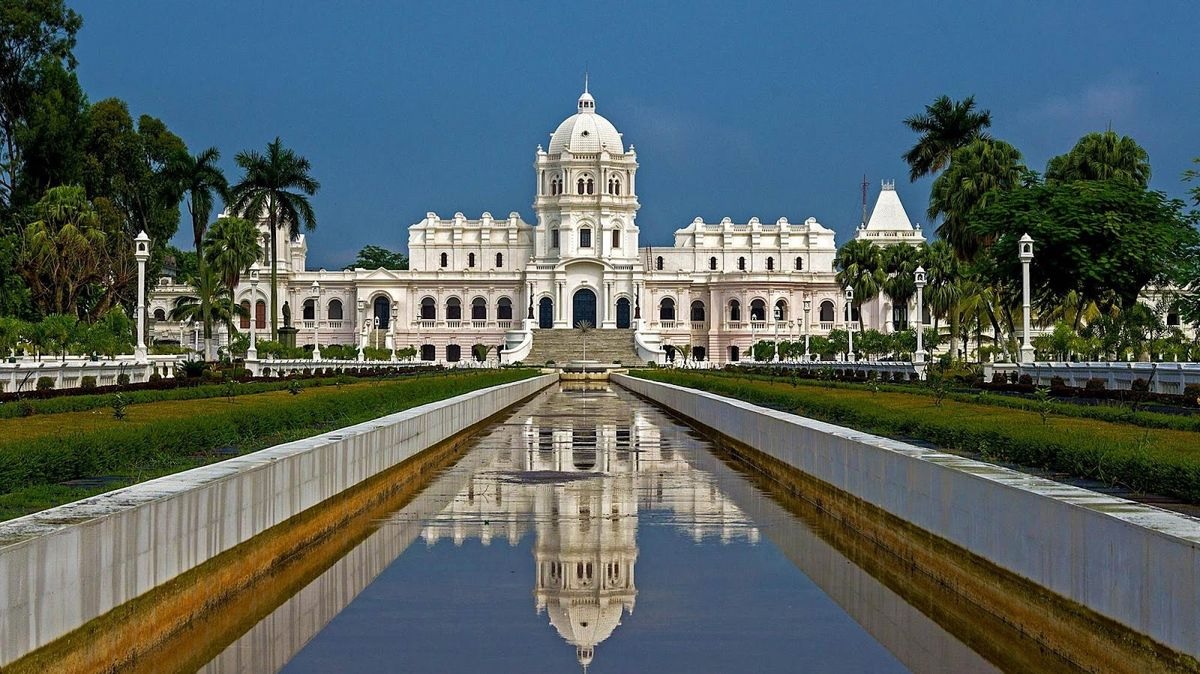In the Heart of the Northeast: Exploring Tripura’s Rich Heritage
Tucked away in India’s northeast is the magical nation of Tripura, a place with a natural beauty, lively culture, a rich history, and breathtaking scenery. It is one of the smallest states in India, covering a size of only 10,491 square kilometers, yet its importance in terms of natural beauty and cultural legacy cannot be overstated. This tiny state, bordered to the north by Mizoram and Assam and surrounded by Bangladesh on three sides, pulsates with a rich tapestry just waiting to be discovered.
The state is endowed with a subtropical climate, with monsoon rains nourishing its landscapes and supporting its rich biodiversity. For the inquisitive tourist, Tripura provides a kaleidoscope of experiences, from its verdant highlands to its varied ethnic populations.
A Glimpse into the Past: Echoes of Kingdoms
The history of Tripura spans several centuries, reverberating with the victories of numerous empires. Founded in the fourteenth century, the Manikya dynasty is a notable example.

These kings created a lasting legacy by encouraging tolerance towards all religions and the arts inside their realm. A monument to their mastery of architecture, the beautiful Ujjayanta Palace is a UNESCO World Heritage Site, with its finely carved walls of red sandstone whispering tales of a glorious past. Maharaja Radha Kishore Manikya built the beautiful Ujjayanta Palace in the 20th century.
Situated in the center of Rudrasagar Lake, the Neermahal, often known as the “Water Palace,” is another remarkable architectural structure. Constructed in the 20th century by Maharaja Bir Bikram Kishore Manikya, this palace is a well-liked tourist destination that combines Mughal and Hindu architectural elements.

The history of Tripura has not been without its share of unrest. The state’s fortitude was defined by conflicts with Mughal monarchs and invasions by nearby countries. Nonetheless, the Tripuri people’s spirit persisted, as seen by their distinctive customs and resilient sense of cultural identity.
A Tapestry of Traditions: Festivals and Folk Arts
The cultural landscape of Tripura is a vivid tapestry. Ker Puja, the harvest festival held annually, is a riot of color and enthusiasm. The ornate costumes and rhythmic footwork of traditional dances such as the Hojagiri and Tripuri dance captivate audiences. The melodies of the bamboo lute (komol) and the perforated earthenware pot drum (sura) reverberate throughout folk music.

A specific place in Tripuri culture is reserved for weaving. The elaborate ‘Raniar Putul’ (dolls of queens) are a work of art created by talented local craftspeople. Both men and women are adorned in the colorful “Tripuri lungi,” a traditional wrapped around garment, each design encapsulating a narrative in its fabric.
Religion is important; the most common religion is Hinduism. There are many temples in Tripura, each with a distinct architectural design and historical significance. Devotees of the mother goddess Tripureshwari go to the Tripureshwari Temple from all over the world. The temple, which is perched on a hill in the town of Udaipur, is highly regarded by devotees who come to view its magnificent construction and ask for blessings.
A Feast for the Senses: Culinary Delights
The cuisine of Tripura is a combination of flavors inspired by local customs and neighboring states. A local favorite, bamboo shoot curry entices the senses with its distinct texture. Due to the state’s closeness to bodies of water, fish preparations are a popular item on the menu. ‘Mosdeng,’ a meal made with fermented fish paste, is an amazing experience for the daring palette. With their distinct smells and scents, foods like Chakhwi, a curry made with pork and local greens, and Mui Borok, a fermented fish chutney, entice the senses.

A delicious lunch is capped up with sweets like “Doi Chira,” a concoction of sweet curd, and “Leencha,” which is created with puffed rice balls soaked in jaggery syrup.
A Haven for Nature Lovers: Untamed Beauty
Beyond the cultural fabric, Tripura reveals an amazing natural setting. Cascades of water, such as the tranquil Rudreshwar and the towering Reiek, are surrounded by lush green hills. Seema Bhadra is a sight of tranquility—a natural lake festooned with lotus blossoms.
Tripura provides a wealth of biodiversity for those who enjoy the outdoors. Numerous national parks and wildlife sanctuaries can be found in the state, such as the Gumti Wildlife Sanctuary, Trishna Wildlife Sanctuary, Tripura Baramura Eco Park and the Sepahijala Wildlife Sanctuary. A wide variety of plants and animals can be found here, including uncommon species like Phayre’s langur, Hoolock gibbon, and clouded leopard.

Trekking through Tripura’s verdant forests allows one to fully immerse themselves in the sights, sounds, and sensations of nature, which revitalizes the body and mind.
A Journey Through Time: Ecotourism Potential
The potential for ecotourism in Tripura is enormous. Nature lovers can enjoy unique experiences such as birding in lush forests, kayaking on tranquil lakes, and trekking through undiscovered hills. Visitors can get a taste of a way of life that hasn’t changed over time because to the state’s unique tribal heritage, which includes communities like the Reang and the Noatia.

Towards the Future: A Developing State
Tripura is still developing steadily. The state is becoming more accessible to tourists through initiatives to promote sustainable tourism and infrastructure upgrades. Tripura’s stunning natural beauty and rich cultural legacy make it seem like a hidden gem just waiting to be discovered.
Conclusion: A Land of Enchantment
The allure of Tripura is found in its singular fusion of nature, culture, and history. The state has a lot to offer, from hearing the echoes of bygone eras to taking part in colorful celebrations and enjoying delicious cuisine. Tripura calls with the promise of leaving a lasting impression on the traveler’s soul, whether they are looking for a voyage through time, a cultural immersion, or a commune with nature.
